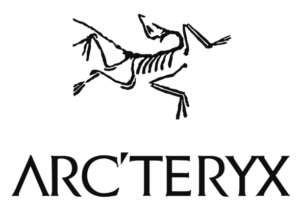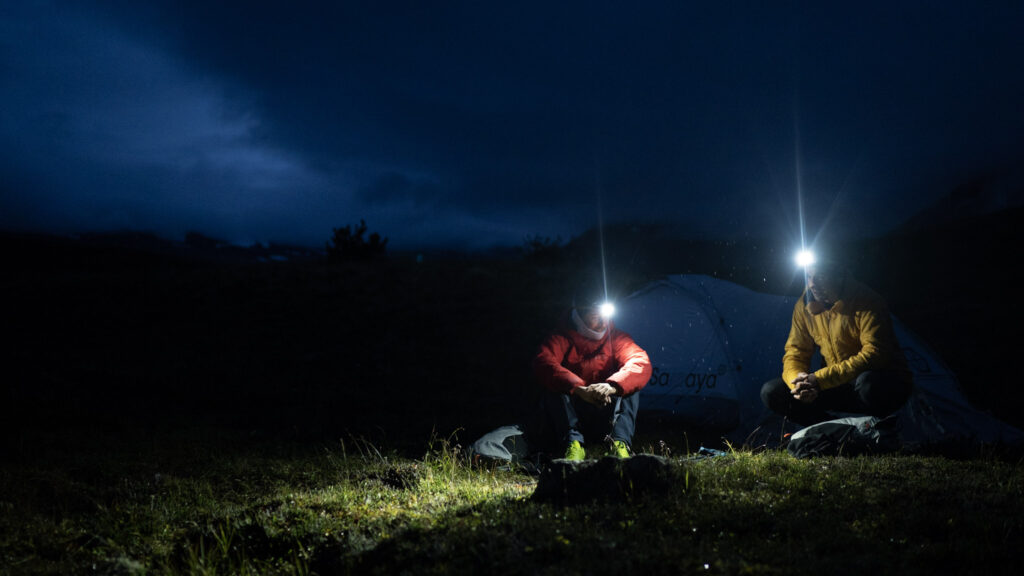
Sponsored by ARC’TERYX
Deep in the heart of Mount Edziza Provincial Park in British Columbia, Canada, it’s easy to feel lost, but perhaps just as simple to find oneself. At over 500,000 acres, the expansive wilderness is home to the Tahltan Nation and abundant with opportunities for adventure and discovery — the awe-inspiring moments are limitless.
Known for his pursuits in expanding the richness of his life, be it aboard skis or, more often than not, his own two feet, Adam Campbell of Canmore, Alberta, Canada, had longed for an opportunity to explore this vast land.
“The main reasons we do this is because we are in search of awe,” Campbell explained when prodded about Arc’teryx’s recent film, In Search of Awe. “There’s a deeply spiritual and performative element to adventuring in these types of landscapes.”
For Campbell, “awe” moments are the basis of all religion, art and endurance sports—something close to his heart that he yearns to share. “The best way to communicate this wonder is through a gaze with someone else,” he explained. “You both look at each other and you know you’ve shared a moment. Those deep connections are the ones you treasure most with people.”
The experience is especially accentuated in terrain with deep consequences, like that found in the Provincial Park, one of North America’s largest. The breathtaking volcanic landscapes that include basalt plateaus, cinder cones, boundless lava fields and the namesake massive Mount Edziza. Standing at 9,121 feet, the dormant volcano demands respect. Its glaciated crater is 8,000 feet in diameter and the entire environment is some of the richest in the world, home to a diverse biosphere of wildlife including everything from grizzly bears to songbirds.

Diving into a wild place like this isn’t to be taken lightly. There are no roads into Mount Edziza Provincial Park; it took a two-hour flight, six-hour drive and then another hour aboard a float plane just for Campbell and his good friend and adventure buddy, Eric Carter, to get to the starting spot. A 70k planned traverse had to be aborted before they even began, as a foot of snow had fallen before they arrived, making the route impassable.
“In true wilderness you have to be much more prepared, especially in terrain that has deep consequences in such a remote part of the world.” Campbell continued, “Making decisions about where to travel through tough terrain is the ultimate challenge.”
That’s precisely what draws him in, though. “I’m deeply aware of the power of nature and our vulnerability to it. That’s part of the awe experience; we’re not really in control of it. You have to listen to what nature is telling you. She doesn’t care about your plans. We are these tiny little specks in this powerful world and there’s a strange beauty in that; going out there to feel small in big places is truly special.” That environmental vulnerability with others is the core of human connection, something Campbell craves and drives his appetite to dream bigger.
“Those moments of awe are the purpose of life. It’s love, beauty; it’s creativity. It’s a lifelong process, because that’s the point of going on,” he divulged. “You can never experience it all. You’ve never conquered a natural space. You’ve just been allowed passage through it at one point in time.”
Sharing these instances of awe with a friend like Carter makes them all the more memorable. “Being out there with your deeper friends takes the bonds to another level. Working together through the terrain is committing, which adds an element of presence. Your mind can’t be wandering when you are thinking about the magnitude of each step.”

Although Campbell is an accomplished mountaineer and skier, he admits trail and ultrarunning are the framework with which he does everything. For him, it’s the basis of efficiency and simplicity; adventure in its purest form. Even as he evolves as a mountain athlete, he aims to move seamlessly through technical terrain. His near two-decade-long relationship with Arc’teryx has helped him evolve and progress to the person he is today, while simultaneously watching and taking part of the brand’s growth into its organic self, as well.
Known for their innovation, Arc’teryx has taken the same approach used in their alpine and mountaineering lines and focused detailed energy on identifying real needs in the more specific mountain running space. Campbell is heavily involved in research and development, testing out new materials, designs and bringing things in for modification. He wants to see products fit for your general day-to-day user all the way to your elite athlete tackling the toughest routes in the world. “Let’s see if we can break gear, see what works, what doesn’t and continue to push products to a whole new level,” he said.
From their new footwear design center in Portland, Oregon, the Arc’teryx team recognizes the importance of listening to the end users and protecting their outdoor pursuits during all four seasons. “People that are putting in the hard yards in January and February are the ones that perform best in the summer, and Arc’teryx is made for those individuals. We make the best battle armor out there,” Campbell said bluntly. “You don’t want to have to think about it, but when you need it, you really need it for survival. It’s an essential product from a safety perspective.”
When he changes routes on the fly, hundreds of miles from the nearest rescue team, in one of the most remote parks in the world, he wants his gear battle-tested and ready to withstand whatever Mother Earth can throw his way. “My gear is an area where I will not compromise. Ever.”
With his mind able to shift seamlessly between brief instances of respite with wandering eyes over otherworldly panoramic views, and the precision focus and fitness required to get himself to those spots, the endless search is worthwhile.
“I want to encourage everyone out there to stay curious—curious about their limits, backyards, the world. Curiosity is at the heart of adventure. The longer we can stay curious, the more awe we can have in our lives.”
![]()





